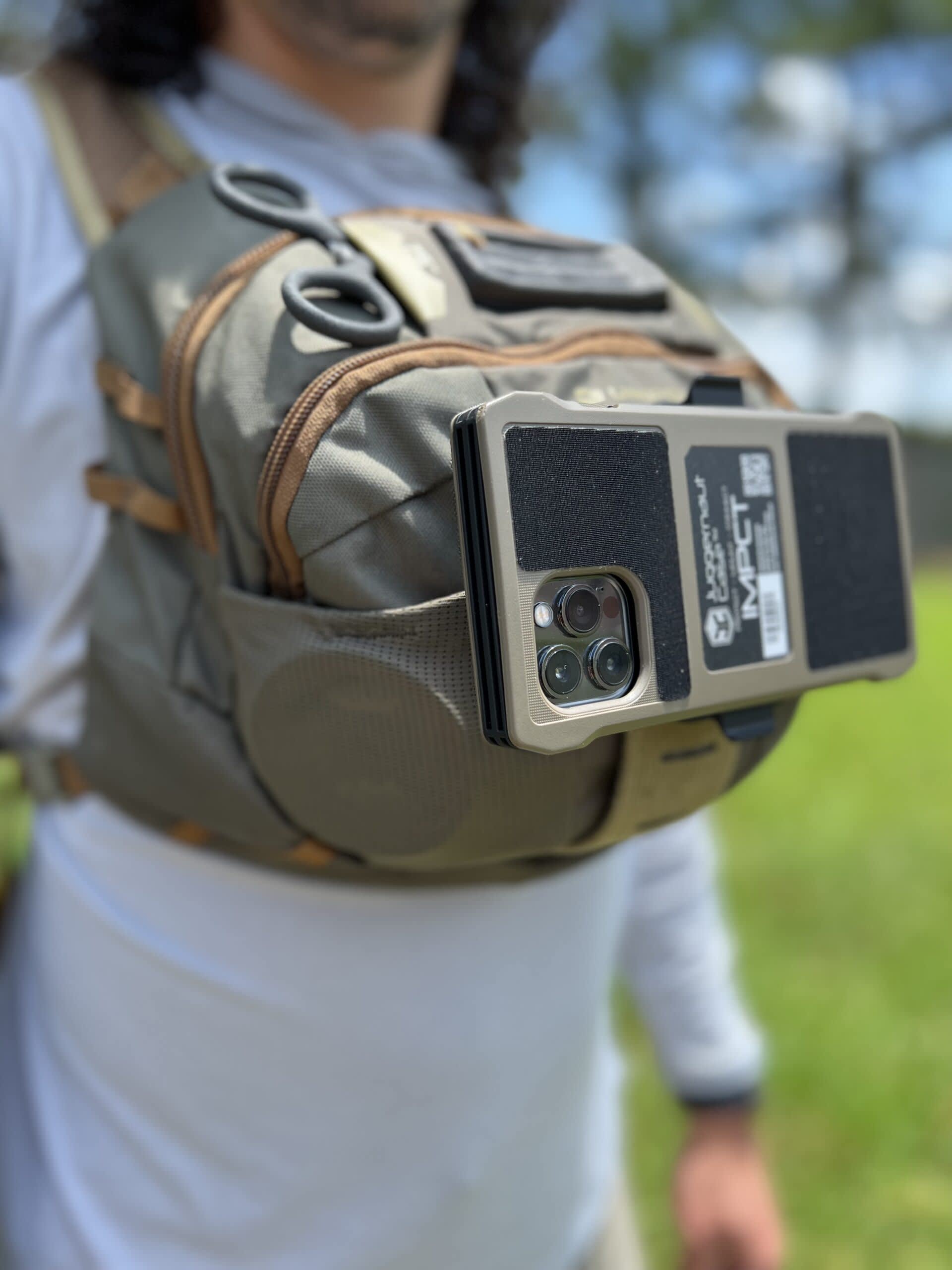Review: Juggernaut phone case
Taylor Hutchinson 08.09.23

I’m a digital minimalist at heart. When going outdoors I try to leave my phone behind or in a bag when I can. Being able to unplug and be present in the moment takes an intentional effort in our attention-based economy. I also recognize however, the duality that my smartphone plays a key part in my modern life. It is a multitool that can be used to solve various problems and simplify day to day tasks. My iPhone 12 Pro accompanies me on hikes, fishing treks, and various outdoor activities. Although, I like for it to be present without it being a distraction. My proclivity for being a gear head will often compete for space with my nature as a minimalist. However, I recognize that I need to protect my gear, including my phone, when it tags along for the ride. Many ruggedized cases on the market I found to be bulky and lack utility outside of just protecting the phone. The trade-off always seemed to be having a Constanza-sized wallet in my pocket or burying the phone in my bag with whatever minimalist case I carry every day. I want to be able to protect the phone while also keeping out of the way to enjoy what was in front of me. Enter Juggernaut phone cases.

The ethos of the Juggernaut cases is to protect, mount, and connect devices inside an ecosystem of accessories and cases. The cases are built from a rugged polymer blend and incorporate a mounting system customized to fit different accessories. Their marketing is geared toward a military customer, but recently have shifted towards the outdoor adventurer with the introduction of their ADVNTR lineup. Along with the ADVNTR series is the ENDVR and OPRTR. Each case is tailored toward an activity or mission set. The IMPCT was the first design to come from Juggernaut cases. Meant for military use, it was recognized by the outdoor community as a low-profile design that survives the most intense adventures. The ADVNTR lineup, along with the other designs, is the next iteration of the IMPCT case. Both the ADVNTR and OPRTR cases are drop-tested and have a top-loading design. They provide additional grip surfaces, lanyard attachments, and a latch system that remains fixed to the case. The previous IMPCT top-loading latch system disconnects from the case entirely, making it prone to being misplaced. The OPRTR incorporates a quick disconnect latch for integrating with a set of QD cables and mounts for military and law enforcement use. Last in the line-up is the ENDVR phone case. The ENDVR is their lowest profile design that is meant for everyday carry and is the only case in their line-up with front-face loading. The Juggernaut phone cases are designed for devices that are already IP68-rated. The cases themselves, however, are not designed to make the device waterproof. Their cases fit a myriad of smart devices. Apple’s iPhones from the series X to the newest iPhone 14 line up are compatible with one or more of the Juggernaut cases. They accommodate older Google Pixel models, Samsung phones, and a few tablets. While not every phone model aligns with every Juggernaut case, they do share the same mounting features to fit within the Juggernaut ecosystem.

The mounting accessories are where the Juggernaut cases come into their own. Each case has secure locking tabs on either side, allowing the user to interface with on-body or vehicle mounts. The vehicle mounts include a RAM mounting interface for those who utilize the RAM ball mounting accessories. These are built for vehicle over-landing or those who just need hands-free use while commuting. Mounting solutions are also available for bike handlebars and include options for inductive charging. Carrying a smart device in a pants pocket or stuffing it in a bag isn’t always convenient when engaged in outdoor activities. The on-body mounts from Juggernaut keep the device secure and handy when needed. Their sternum mount is made to affix the phone case to a hiking pack via a sternum strap. This mounts the device at chest level and incorporates a hinge to allow access by folding down the device to access the touch screen. Other mounts like the clip and belt mount allow for options to attach the cases to a belt, various straps, or PALS webbing. These mounting accessories build out an ecosystem that keeps the smart device protected from the elements but readily available when required for mapping, GPS, or taking a photo.

My personal IMPCT case for the iPhone 12 accompanies me on many hikes and fishing trips. The clip mount is the most versatile for my needs. If I’m fly-fishing or hunting, the phone clip mount stays attached to a chest rig or backpack shoulder strap. This is great for taking a video or a quick picture from a first-person point of view. The mounting tabs have a tight grip keeping the device secure, but are easy enough to detach with one hand if needed. I have dropped my iPhone down mountain rocks, slid over coarse gravel, and taken a dip into creek beds. The case took every beating I could throw at it. The only scratches on my phone now are from when I used other cases. Even when I clip the phone to my belt line, it’s light and slim enough to where I don’t notice it. Mounted to my chest or my belt line, the phone is at the ready for when I need it. This keeps me focused on the moment and allows me to pay attention to my surroundings. A part of being outdoors is being present in nature. If you have to bring your attention-grabbing device with you, be sure it doesn’t take your attention away from what is important in nature.

